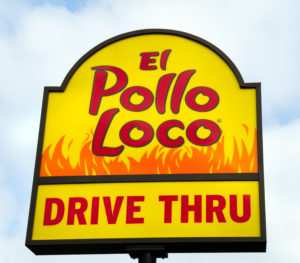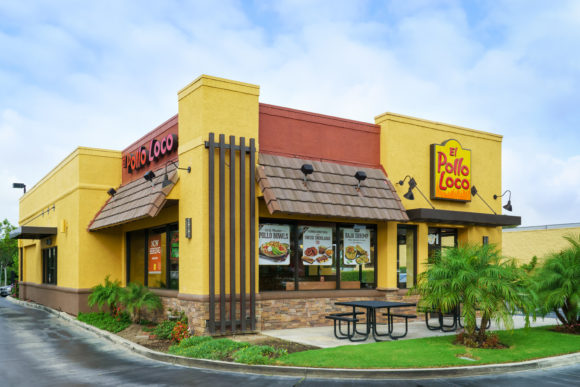Maintaining a culture of safety is a company-wide initiative for California- based El Pollo Loco, according to Shaun Jackson, director of risk management for the restaurant chain. While employee morale and predatory attorneys pose roadblocks to improving claims frequency, the restaurant has managed to reduce its experience modifier despite employee turnover and new locations, Jackson said.
Morale, an industry-wide problem that has increased as a result of more part-time workers, can lead to employees preemptively filing claims, said Jackson. In Southern California especially, applicant attorneys cold call the restaurants seeking employees to file workers’ compensation claims, he said. In addition, more workers’ comp claims are accompanied by a California Department of Fair Employment and Housing or harassment complaint.
According to Jackson’s estimate, the company has 25 times the number of claims and the amount of financial exposure in California than anywhere else in the country.
 The key to maintaining a safety culture is to engage everyone, from the top down and bottom up, he said. With upper management, it’s important to compare costs associated with claims frequency to a percentage of net sales. Publishing results – good and bad – as well average costs for certain injuries aids upper management in understanding how they may affect the bottom line. Safety incentive programs, such as one to incentivize employees who purchase slip-resistant safety shoes, helps keep employees and middle management engaged.
The key to maintaining a safety culture is to engage everyone, from the top down and bottom up, he said. With upper management, it’s important to compare costs associated with claims frequency to a percentage of net sales. Publishing results – good and bad – as well average costs for certain injuries aids upper management in understanding how they may affect the bottom line. Safety incentive programs, such as one to incentivize employees who purchase slip-resistant safety shoes, helps keep employees and middle management engaged.
Following is an excerpt from Insurance Journal‘s interview with Jackson.
Why is safety culture so important to any business?
Shaun Jackson: It’s really easy to lose sight of safety because we’re trying to put money on the bottom line. We’re trying to manage labor and anything else that’s going on in the restaurant. It can become a back burner item, but because we’re able to show dollar figures to our operator and show them safety affects profitability, it’s extremely important. Fortunately, we’ve got senior management engaged in safety now because one injury can wipe out four days of sales.
We have specific tools, like safety incentive programs, where general managers and restaurant managers have a stake in maintaining that safety culture. We manage from the bottom up and the top down. We seem to have a whole organization-wide safety culture that we keep in place.
What role does the CEO and management play in safety?
Jackson: We’re publishing … the average cost of this type of injury. If I tell one specific area or divisional leader that they’re leading the company in this type of injury and each one costs this, and I’m copying other executives, it’s a good dialogue.
This is a gigantic opportunity for us to really put it in perspective. You can go out today and increase your speed of service by four seconds and really get your stores focused on that, but if you had prevented this one injury from happening, that would have added 30 days’ worth of sales.
We’re really big on publishing results whether they’re positive or negative, so everything we publish has the responsible person’s name attached to it.
What is a top challenge in keeping a culture of safety?
Jackson: Being vigilant about morale. I don’t think I’m speaking about El Pollo Loco specifically. I’m talking about our industry with ACA [Affordable Care Act] and everybody moving toward more part-timers. People aren’t trained as much. It’s definitely a challenge to keep people engaged. Morale can be a big driver of claims, whether it’s people about to lose their job for whatever reason and then they file or they just don’t like our company or they don’t like the industry.
What are some of the best practices for risk management in your industry?
Jackson: One of the things that works really well is having a safety chairperson in each location … not a management person, because a lot of times when we put the managers in charge of safety, it’s just like a pencil whipping situation. But we have a safety chairperson who’s rewarded every quarter for performance in having safety meetings and training people when there’s an accident. They do the investigation.
Another thing we’ve started doing recently is meeting with human resources on a weekly or biweekly basis, because we found there’s a lot of overlap with nonindustrial and industrial claims, and … civil claims that are accompanying workers’ compensation claims. We’ve had a much more open dialogue with HR to make sure we’re staying ahead of potential claims. If they say, ‘This store is having a lot of challenges,’ we may want to keep an eye on that store and really work a lot more closely with them with regard to safety.
What are the injuries that occur? What are the risk management solutions?
Jackson: Slips and falls are probably our No. 1 opportunity. We’ve done a great job at limiting those, but they still exist and always involve multiple body parts. They’re still our most expensive injuries. We get a lot of continuous trauma and sprains and strains that end up going on forever.
What do you see as the biggest cost challenge in worker’s compensation?
Jackson: There needs to be … a lot of reform in workers’ comp. We see, and a lot of my peers see, that applicants’ attorneys are able to basically run the show. They can keep as many injured employees as they want in the hopper. They can essentially get whatever they need to get for a claim and are driving the cost of these claims.
I don’t want to sound like we don’t have legitimate injuries. We certainly do, and we work with those employees. But it’s such a small fraction of the cost of our total workers’ comp exposure.
Most of what we have is litigated, so we’re dealing with applicants’ attorneys for cases that, if they weren’t involved, we could settle and take care of the employee, get them back to work immediately. That’s a challenge for us … working with employees who see more advantage not coming back than returning to their job.
Are you concerned about the future of workers’ comp?
Jackson: I am. I see states like Texas and in the Midwest that seem to be doing okay, where there’s a longer waiting period for benefits, and some of that kind of stuff that makes it less appealing to attempt to prolong a claim. Even in Arizona and Nevada, we just don’t see what we’re seeing in California, Florida, New York or some of those states where it’s so easy to get benefits.
Once you’re out, there’s not a lot of compelling reasons to return to work, especially if you’re a part-timer and have no loyalty to the organization.
There’s certain states that definitely have a lot more work to do.
El Pollo Loco is based in Costa Mesa, Calif.
Was this article valuable?
Here are more articles you may enjoy.



 State Farm Sued Over Policies Backed by Distressed Insurer PHL
State Farm Sued Over Policies Backed by Distressed Insurer PHL  Viewpoint: Agentic AI Is Coming to Insurance Industry – Much Faster Than You Think
Viewpoint: Agentic AI Is Coming to Insurance Industry – Much Faster Than You Think  Florida, East Coast to See Big Insured Losses From More Cat 5 Storms, Researchers Say
Florida, East Coast to See Big Insured Losses From More Cat 5 Storms, Researchers Say  How ‘Super Roofs’ Reward Insurers, Cat Bond Investors and Homeowners
How ‘Super Roofs’ Reward Insurers, Cat Bond Investors and Homeowners 


